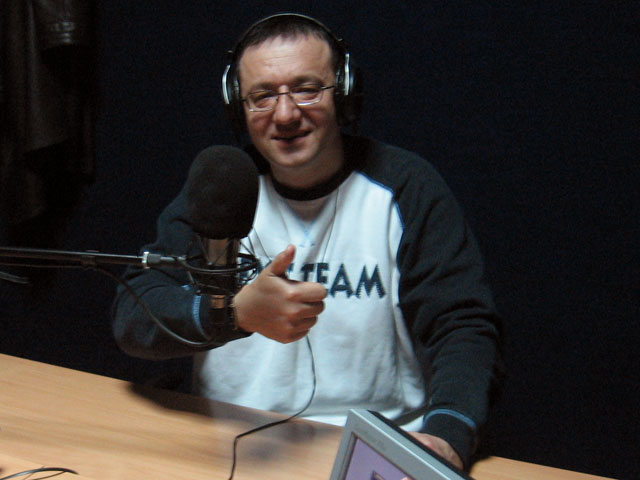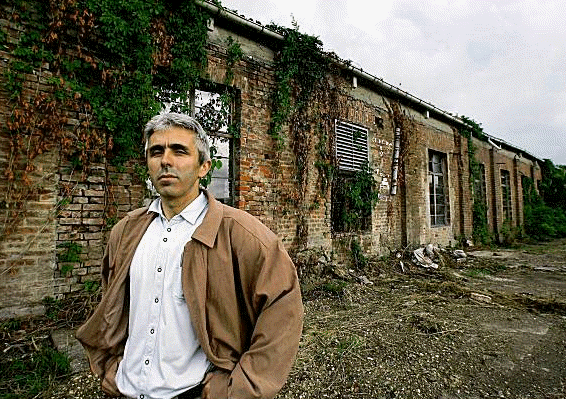


DONAUSCHWABEN
ISSUES ARTICLE
JULY
2008

This
article was submitted in July 2008 as a "Donauschwaben Issue" for
discussion purposes.
Comments
to this article/issue can be viewed following the article on this webpage.

SERBIA
RENEWAL PLAN
UNEARTHS
PAST HORROR
Brutal
Prison Camp for Local Germans After WWII

by
Slobodan
Lekic
Associated
Press

Sremska Mitrovica, Serbia -- When entrepreneur Mitar Tasovac
purchased a long-abandoned factory intending to develop a housing complex on the
site, he uncovered a chilling chapter of local history that had laid dormant for
60 years.
After World War II, the sprawling complex on the outskirts of this
northern Serbian town served as a prison camp for local Germans, and was where
about 2,000 people died.
Before the Nazi invasion in 1941, some 520,000 members of the
minority lived in the Kingdom of Yugoslavia, mainly in today's Serbia and
Croatia.
During the war, many joined the locally recruited 7th SS Volunteer
Division Prinz Eugen, which killed tens of thousands of Serbs, Jews and Gypsies.
After the war, it was time for revenge.
In just two years, about 300,000 ethnic Germans were herded by
Yugoslav troops in dozens of internment camps before being deported. A similar
number of ethnic Italians were also expelled from Croatia and Slovenia.
"About 52,000 German civilians, mostly children, perished in
various camps in Yugoslavia between 1945-47," said Hans Supritz, president
of the Association of Danube Swabians in Germany.
"We're not counting German soldiers, just innocent civilians
who had in no way participated in the occupation," said Supritz, a retired
engineer in Ulm.
Most died of starvation or maltreatment, or simply froze to death,
he said.
In the camp in Sremska Mitrovica, a farming town 50 miles west of
Belgrade, any German civilians involved with the SS or those who had informed on
their Serb and Jewish neighbors were executed. Others were used as forced labor
before being deported to Germany or Austria.
All told, about 12.5 million Germans were expelled from or fled
eastern Europe when the Third Reich collapsed. The issue remains an occasional
irritant in relations between Germany and nations that suffered under Nazi
occupation.
The horrors the ethnic Germans underwent were long a taboo topic in
Yugoslavia, where official propaganda ignored the painful past by claiming they
had fled together with retreating Nazi forces in 1945.
Decades later, it was Tasovac's plan to build homes on the prison
camp site that sparked media attention and encouraged a citizens group, the
Serb-German Cooperation Society, to press municipal officials to finally honor
the dead.
"Most of those buried at this site were children and there can
be no harm in marking their grave," said Jovica Stevic, vice president of
the society.
Stevic, 42, recalls stories about starving German kids sneaking out
through the barbed wire and begging for food on the streets of Sremska Mitrovica.
The children would place white pebbles in front of homes where they had received
food. With black pebbles, they would mark houses where inhabitants beat them or
returned them to the guards, Stevic said.
Stevic said municipal authorities recently granted permission for a
monument to be built to commemorate the ethnic Germans who once lived in the
suburb of Hesna, formerly known as Hessendorf, where the camp was located. The
unveiling ceremony is planned for fall.
The latest events mark a broader turnaround in Serbian public
opinion regarding the ethnic Germans who used to live in their midst. Several
monuments to their suffering have been recently unveiled or are being built in
other towns and villages in northern Serbia where internment camps used to be
located.
"The old falsified history is now being corrected under a
democratic government," Stevic said.
Despite the occasional high-profile controversies over the fate of
ethnic Germans expelled from Poland and Czechoslovakia, very little has been
heard about those deported from Yugoslavia, Hungary and Romania.
"They have never been in the focus of public attention because
in comparison with numbers expelled from elsewhere, their total is not very
high," said Erika Steinbach, a lawmaker for Chancellor Angela Merkel's
Christian Democratic Union who heads the Federation of Expellees.
One of the reasons passions here are not as high as in other
countries is because there is almost no chance of the ethnic Germans recovering
their property in Serbia.
An agreement on war reparations between Yugoslavia and Germany
effectively ended that possibility. The two sides agreed that confiscated ethnic
German property would be deducted from the much larger sum paid to Yugoslavia
for damages inflicted by Nazi troops.
Following the mass deportations of 1945-47, approximately 100,000
ethnic Germans - mainly those who had sided with the resistance - remained in
Yugoslavia. But most eventually emigrated, leaving less than 10,000 in today's
Serbia, Croatia and Slovenia.
Tasovac said he would prefer to build a memorial garden on the
corner of the site - now covered with broken concrete and industrial trash -
where the grave site is located.
"It would be the Christian thing to do, to mark the grave in a
dignified way," he said.


Jovica
Stevic, Vice President of the Serb-German Cooperation Society, says there would
be no harm in marking graves of slain children. About 52,000 Germans died in
camps after World War II.

COMMENTS TO THE ABOVE
ARTICLE/ISSUE ARE AS FOLLOWS:

21
July 2008
Thank
you for this interesting information. There are several inaccuracies; first
about the SS Prinz Eugen Divisions, second the Germans were never deported by
Tito, after the closing of the camps but placed on forced labor duty for three
years. They had to pay for their release prior to being released to
Austria
and German in the 50ís.
The
text as you see is partially correct however unfortunately never is the full
truth admitted by the Serbs since the Donauschwaben as a whole are not to blame
for any atrocities clamed by the terrorist Tito and his henchmen who ousted
their own King.


